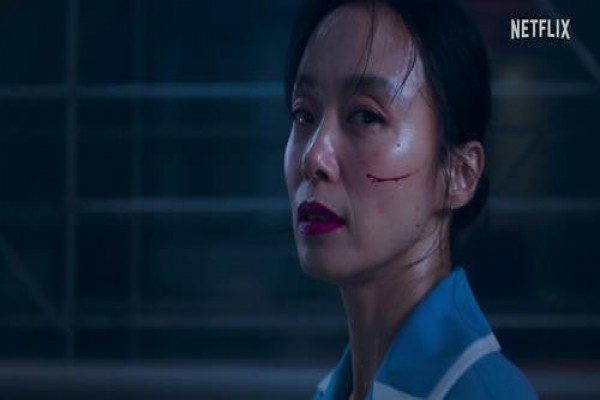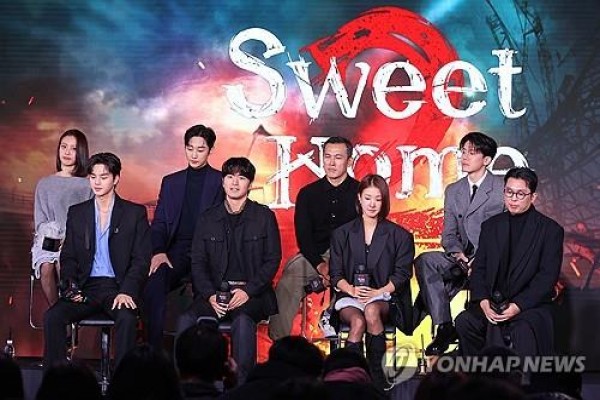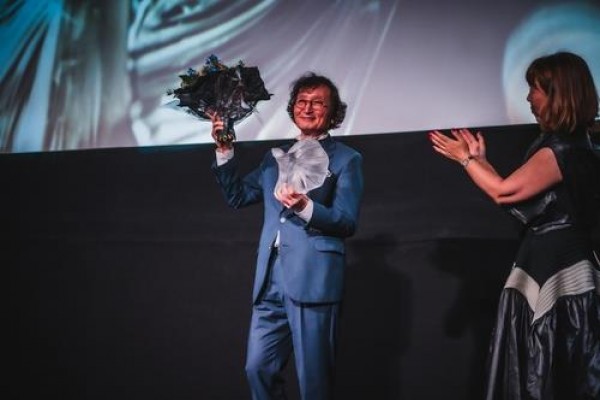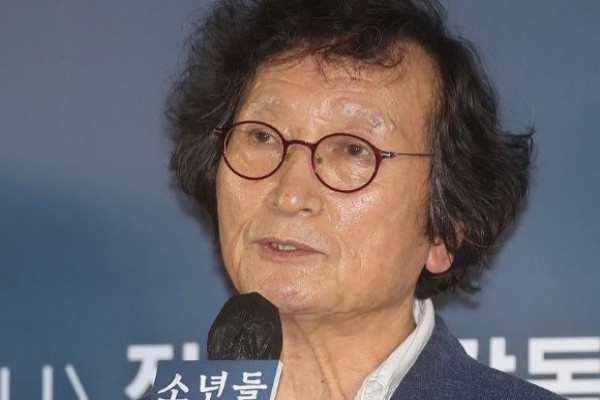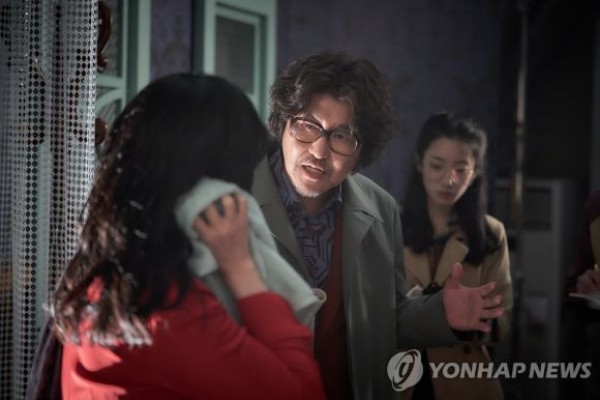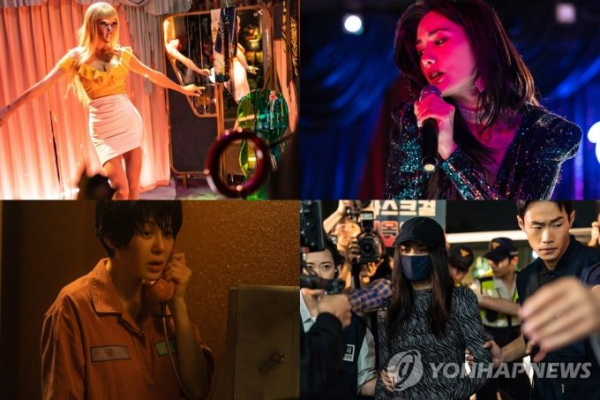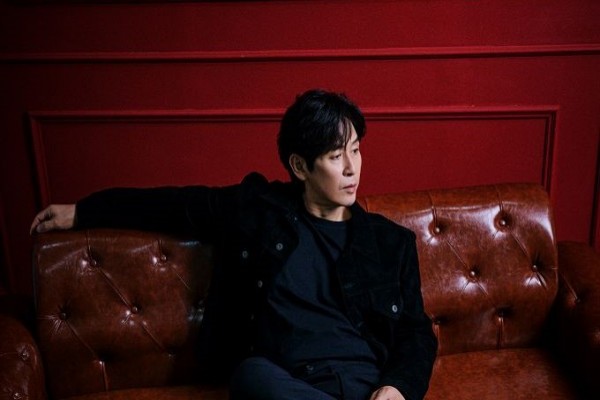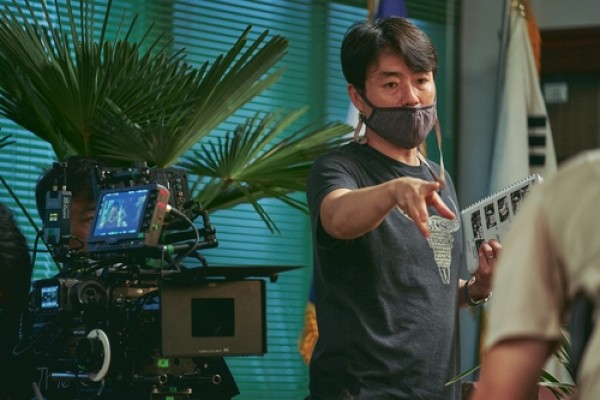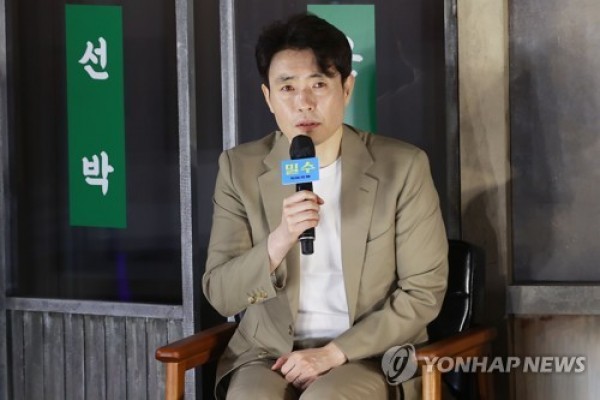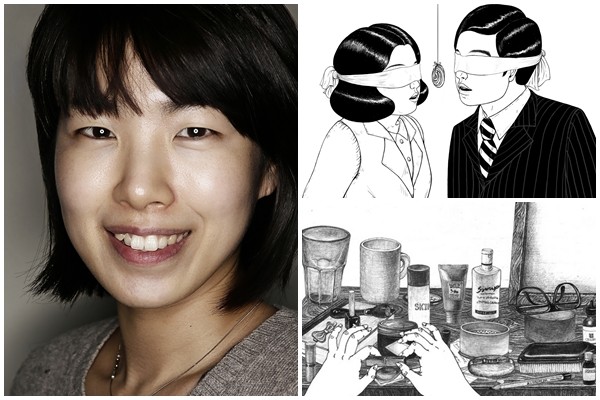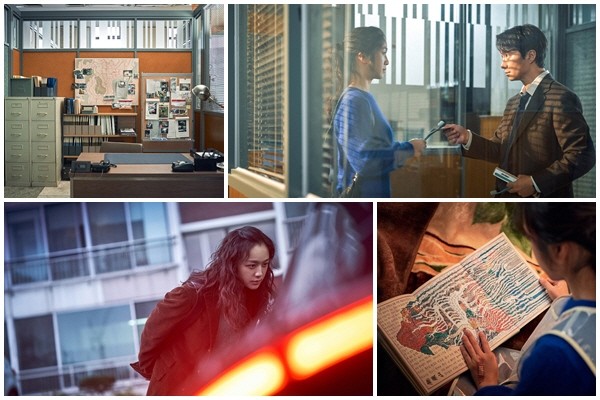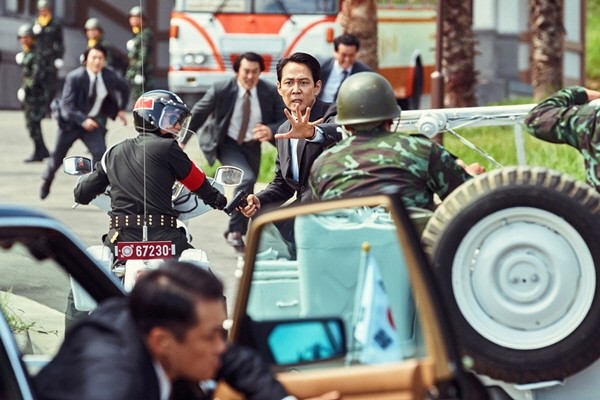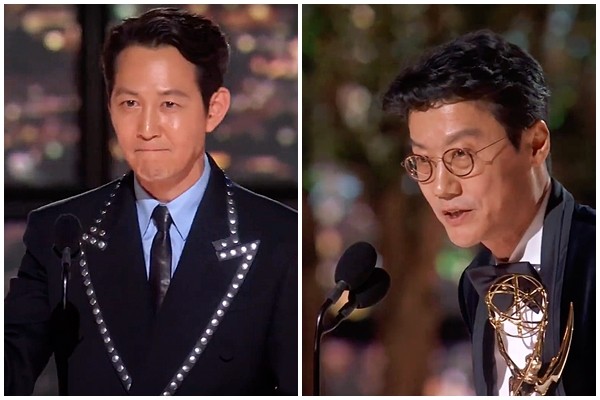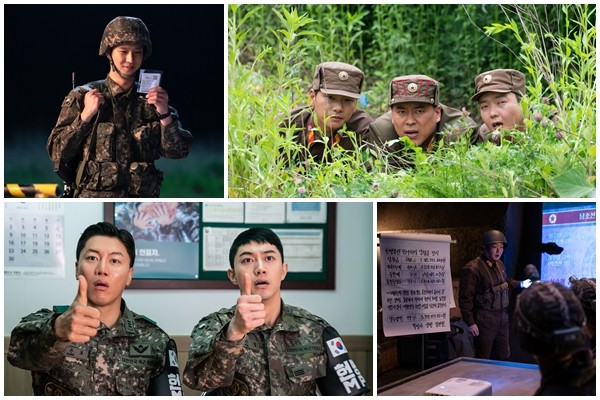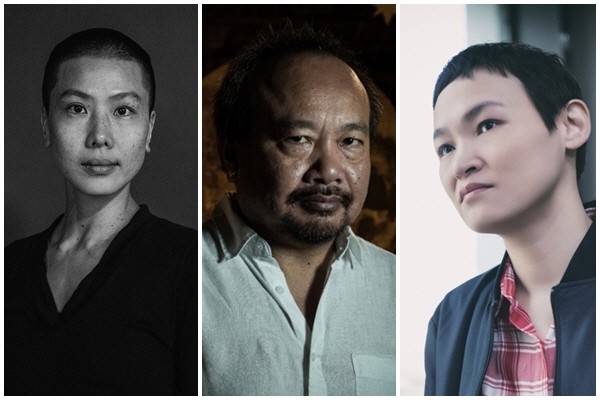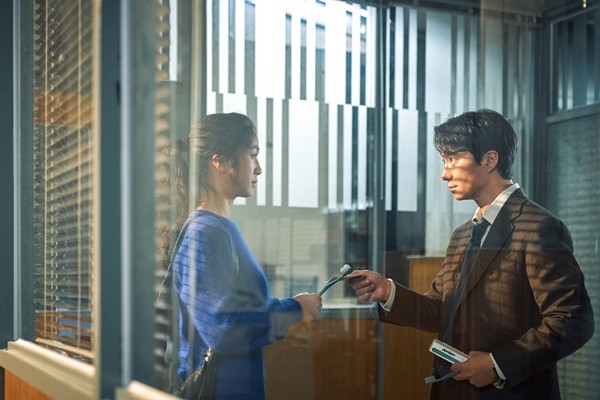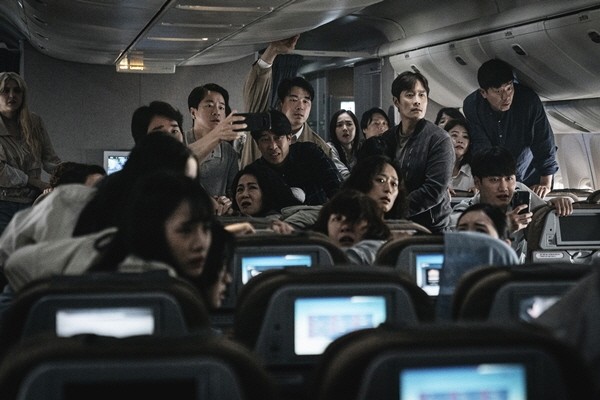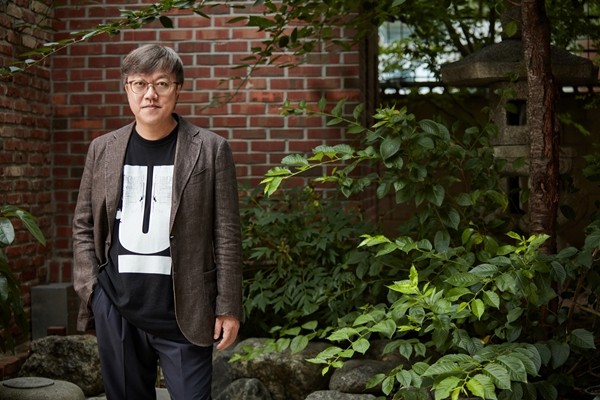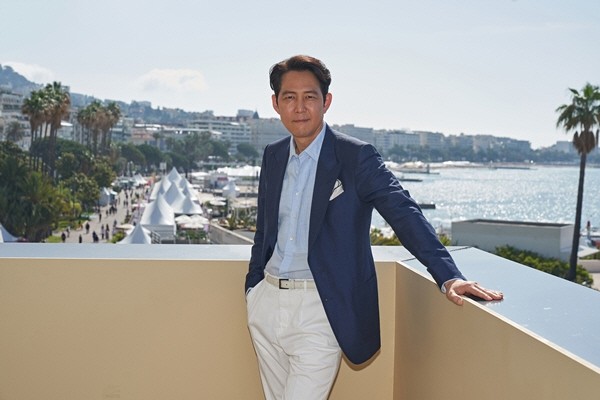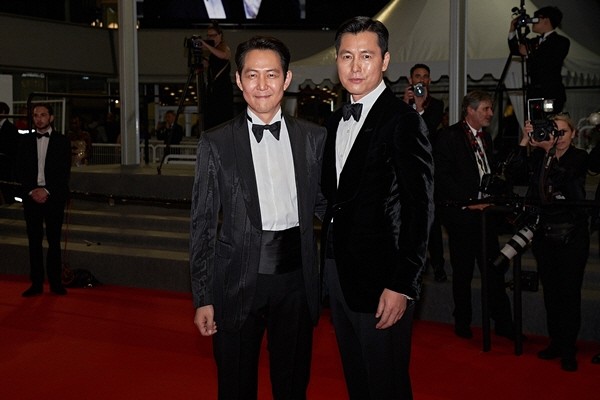130, Suyeonggangbyeon-daero,
Haeundae-gu, Busan, Republic of Korea,
48058
KIM Byung-woo, Director of TAKE POINT
Jan 07, 2019
- Writerby SONG Soon-jin
- View2348
“I made what I do best, an entertainment movie.”

KIM Byung-woo is back with a new film, five years after his film The Terror, LIVE (2013) delivered a refreshing jolt by imagining a terrorist attack in the heart of a Korean city. This time, it is an action movie on a larger and grander scale. Take Point follows Ahab, a mercenary of Korean descent working for an international private military company sent on a secret mission in an underground bunker in Panmunjeom on behalf of the CIA. When he is suddenly thrown into a situation he didn’t expect, he gets to meet a North Korean doctor, Yoon Ji-eui (LEE Sun-kyun). This film, which claims to represent the action in the real-time format of video games (something still uncommon in Korean cinema), took this form out of KIM Byung-woo’s desire to watch an entertainment movie.
It took a lot of time for your second feature film to come out. However, now that I have watched it, I don’t think it would have been possible to avoid such a long preparation time.
This project started five years ago, in autumn, at the production company Perfect Storm Film. While the division of the Korean Peninsula is already a complex topic, the international private military companies in themselves were an unfamiliar concept to me and there were also many aspects of it I didn’t comprehend, so it was important to do some research. I spent the first year focused on acquiring background information through books, and as for the mercenaries, I sought out many documentaries on real-life engagement tactics employed by private armies. Also, after I wrote the first draft of the scenario, it was revised by TAE Sang-ho, a Korean war correspondent. While I was writing the action scenes, I had advisors who would tell me whether these tactics made sense in a given situation, and how to fix it if necessary, things like that. That’s why it took me three years to finalize the script.
We can’t talk about this film without mentioning its topic. How did it come about?
Discussions about the political situation between the North and the South naturally arose once I decided to set the story in the underground bunkers of Panmunjeom. And here, the logic behind the influence of powerful nations cannot be ignored. The Korean division itself was a decision driven by the logic of global powers’ spheres of influence, after all. As I was choosing the setting, I tried to imagine how this historical fact would be reflected in a proxy war between big nations on the Korean peninsula, and what it would look like today, now that the concept of capitalism has considerably progressed since then. I was also willing to take a different approach than previous Korean movies that dealt with the Division. But choosing this political context was nothing but a way to justify such incident happening in an underground bunker. This wasn’t an issue I wanted to dwell on in my movie. I wanted to keep the focus on the character of Ahab. I wanted to show his evolution, and which role Yoon Ji-eui plays in this process. Ahab is a character in an extremely confusing situation, where a war seems imminent, and he is constantly being asked who he can possibly save. And towards the end of the film, Ahab ends up choosing his answer to that question.

Mercenaries from an international military company are quite unusual characters in Korean cinema. Did this require any particular effort to portray these characters in a convincing way?
KANG Myung-chan, CEO of Perfect Storm Film, put a lot of effort into casting actors with actual backgrounds as mercenaries. The props of the movie too were important devices in making the movie believable. The story being set in 2024, the mercenaries’ weapons and equipment had to convey the image of extreme realism, of an advanced military technology 5 to 6 years from now that seems like a new version of the iPhone. And I estimated there needed one novel tool, something never seen before. The thing I came up with after giving it a lot of thoughts is these round-shaped drones that can roll freely on the floor, on the walls and on the ceilings. It’s actually a device employed by the US army that I took inspiration from and reinterpreted in a more visually interesting way. And as they act as the eyes and the ears of Ahab when he gets stuck in a room, they also take the role of cameras.
Isolated, Ahab can only get a sense of the explosive situation in which his teammates are through a screen. The screen is organized as if it was a video game, and watching the events happen in real time also reinforces the similarities with The Terror, LIVE.
Those are tactics intended to allow audiences to enjoy the film. Marking with an X the characters every time one of Ahab’s men dies, and showing the map of the underground bunker as inserts, are both conventions borrowed from first-person shooter video games. Also, I think that the real-time, live broadcast format is the part where I’m the most competent; it maximizes the sense of realism as we progress through the story minute by minute, second by second, without time jump or ellipsis, and gives the feeling that the audiences and the main character are sharing the same space. Writing a scenario in this format is actually quite difficult. However, because this is the element I can do best, I think I’ll keep doing this in the future. Instead of being hell-bent on trying other styles or genres, I want to refine the kind of movies I do best.

It is the second time in a row you work with actor HA Jung-woo.
After The Terror, LIVE, I suggested we work together on whatever comes next. Because we have different dispositions, there is ironically a good compatibility when we work together. HA Jung-woo makes up for the elements I’m weaker at or that I cannot make work however I try. According to the script, Ahab was a mean character, extremely cold, but he portrayed him in a way that can elicit compassion from normal people.
In many respects, this is a movie that seems to have many intersections with your debut feature, The Terror, LIVE.
That must probably be because I make the movies I want to watch. In terms of genres, I prefer thriller movies. When I was a student, one day I got to watch in class Alfred HITCHCOCK’s Rear Window, and it has influenced me in many ways. A man sitting at his window observing people living across the courtyard suddenly gets involved in a murder case. I was enticed by the concept of “a man seeing something different from his window” and applied it to both The Terror, LIVE and Take Point.
Finally, is there anything you would like to say to your audience?
Since it’s my second long-feature film and it also took a lot of time to produce it, it’s true that I attempted a lot of things. But I think there is nothing much I can do now for this film. That said, I hope the viewers will see Ahab as a friend. As they spend time with him in the bunker, there may be moments where they will feel disappointed in him, or even won’t understand him. But I hope that, by the end, they will agree with his choices and they will be able to support him and root for him. If they can do that, it will make the movie a bit more enjoyable.










